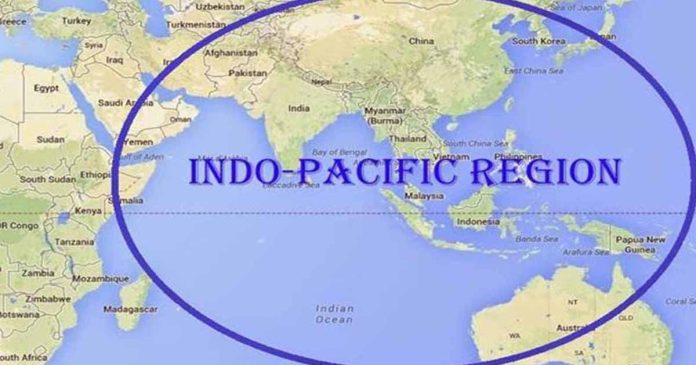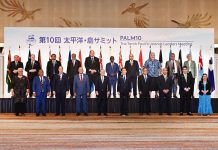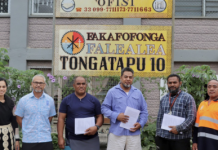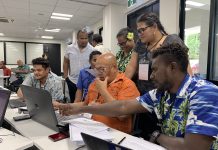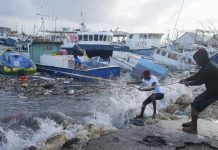Op-ed by Maureen Penjueli
For now, the Pacific Island regionalism canoe has been fixed. The fracture of the region from the appointment of the Cook Islands’ Henry Puna as Secretary General of the Pacific Islands Forum, over the Micronesian candidate, has been mended. Bringing to an end a short but turbulent period for Pacific regionalism since that infamous vote on the 4th of February 2021.
Under the leadership of Fiji (both former PM, Frank Bainimarama and his successor Sitiveni Rabuka) and funded largely by the Australian government, the conditions to ‘unify the region’ are contained in the reform package negotiated under the Suva Agreement. The headline outcome of the package is the formalised agreement that the Secretary General’s position will be rotated amongst the three-sub regional groupings (Micronesia, Melanesia and Polynesia). Accompanying this is the establishment of a Micronesia office of the Pacific Islands Forum Secretariat to house the much-coveted Office of the Pacific Ocean Commission (OPOC). At the Special Leaders Retreat in Nadi, Fiji former President of Nauru, Baron Waqa, Micronesia’s candidate, was announced to be the next Secretary General in 2024.
Yet as the dust settles and the wine, kava and betel nut spittle flow to cement the deal, what is becoming clear is that the regional schism, beginning with the exodus of the five Micronesian partners from the Forum, opened up opportunities for the US and its allies to herald in the dawn of the Indo-Pacific Era. In an attempt to halt China’s perceived powerplay in the region as well as in preparation for any potential future war, the Biden-Harris Administration and its allies, led by Australia, have moved fast to take advantage of a much-weakened region. Within two years we have seen consolidation of the various and (often) overlapping Indo-Pacific frameworks and partnerships. These are extensive in coverage including political, trade and economic, digital, security, environment and ocean, gender, human rights, and the ongoing climate emergency.
This article looks at various initiatives by 3 powerful players, their overlapping membership all consolidated under the Indo-Pacific (see map). The map shows how the “Blue Pacific”, an initiative by the Pacific Island leaders, has been subsumed into the wider Indo-Pacific framework while we squabbled, quarreled and made-up. The Indo-Pacific architects went from an encircling strategy initially with Pacific rim countries, to tightening the noose around the Pacific islands themselves – effectively shifting the centers of power from under our very own institutions and institutional arrangements to outside our region. Today it would seem that our patch of the Pacific Ocean is but an extension to an expansionist world order led by the U.S and its allies.
The geopolitical needs of the Indo-Pacific have fundamentally shifted the internal power relationship amongst the Pacific Islanders. The North Pacific is now the center of power long been a neglected part of the Forum family, with its strategic security location, its long-standing Compact of Free Association with the U.S, and now many agencies including the technical agencies (SPC), UN, and multilateral banks such as the World Bank establishing offices there. Regionally the powerbase has moved back to Asia-Pacific with the APEC and ASEAN block as the center of political and economic power (PNG is the only Pacific Island country that is an Observer at ASEAN, and a Member of APEC) and to the metropolitan centers of power – to Brussels, Canberra, London, Tokyo, Wellington and Washington D.C – the architects of the new ordered Pacific.
Hard Pivot of the U.S as an Indo-Pacific power:
The exodus of the Micronesians from the Forum in 2021 provided an opportunity for the U.S to aggressively re-engage bilaterally, as well as (sub)regionally. As a re-entry point, the U.S. administration presented itself as a key broker to bolster Fiji and Australia’s efforts for the return of the Micronesian leaders back to the Forum. At a meeting on February 12th 2022 in Hawaii, hosted by Secretary of State, Blinken, President Biden’s decision to host the forthcoming ‘Pacific Island Conference of Leaders’ was announced. This meeting was also the stage for the FSM President, on behalf of the Micronesian leaders, to announce the temporary rescinding of their decision to withdraw from the Forum.
The U.S, true to its re-commitment, commenced many high-level US delegations on zig zagging tours across our ocean and followed through with 3 flagship regional initiatives.
The first came on the 23rd of May 2022, when the Biden Administration launched its Indo-Pacific Economic Framework for Prosperity (IPEF). The US led initiative aims to link major and emerging economies in the Indo-Pacific geopolitical area to the US economy in an attempt to undermine China’s growing economic influence regionally but also globally. The IPEF currently involves 14 Parties, with Fiji being the only Pacific island nation to be part of this trade-pact representing over 40 percent of the world’s GDP. There is an expectation that negotiations for IPEF will be completed by November 2023 when the US hosts the APEC Leaders Meeting.
However, even if Fiji is currently the only PIC involved in IPEF the US is seeking to achieve its goals of economic integration through additional avenues. At the writing of this article, the U.S International Trade Commission officials were visiting the PACER-Plus Implementation Unit to research a fact-finding report on US Trade and Investment in the region. The US Trade and Investment Dialogue’s purpose is to “pursue solutions to increase trade flows between the US and the PICs”, while many PICs already can export mostly duty free to the U.S, this process will undoubtedly seek to increase US access into Pacific Island economies. The report is expected to be tabled at a meeting on trade and investment later this year.
The second initiative was announced on June 22nd 2022 when Australia, Japan, New Zealand, the United Kingdom and the United States jointly launched the Partners in the Blue Pacific (PBP) initiative. The PBP is supposedly an ‘inclusive, informal mechanism’ to support ‘Pacific priorities’. As pointed out by Prof. Greg Fry the problem here is that, at best, this security model operates on a perceived interest of the Pacific, but is not under the control of governments or regional institutions created for that purpose! Emphasizing this point, the U.S, after already launching the initiative, deployed high-level visits to PIC Heads of Mission in New York, to France and the European Union, followed by meetings with Pacific Island leaders and the Forum Secretariat to present it.
The third major regional flagship initiative launched on September 29th, 2022 in Washington D.C is the ‘Declaration on U.S- Pacific Partnership’ which included all the independent Pacific island nations and territories where consultation with Paris was necessary for participation by New Caledonia and French Polynesia and to ensure participation by NZ Rim countries, Cook Islands and Niue as sovereign states. Under this Partnership are a range of initiatives including an announcement of over USD$810 million in expanded programs and a new 10 year, $600 million “Economic Assistance Agreement” (which is requested of U.S Congress) to be associated with the South Pacific Tuna Treaty. It would be interesting to see how the discussions around the $600 million offer might play out, particularly if Congress agrees to pay, in an already fragile regional unity.
What the U.S– Pacific declaration makes clear is the U.S. Pacific Partnership Strategy is an addendum to the Indo-Pacific Strategy of the US, the overarching framework. The subtle positioning of the Pacific strategy under the Indo-Pacific strategy demonstrates the subsuming of the Pacific into the broader geopolitical and economic interests of the US and its allies. Bringing the Pacific Islands back together and stitching a new Pacific regionalism, with funding promises and a range of strategies that, while they may support the Pacific Islands, serve the bigger interests of the US.
Europe plays neighbour in the Indo-Pacific neighborhood:
While the U.S pivots, Europe re-positions itself as a neighbor by virtue of its colonies in the Indo-Pacific neighborhood, while seeking to benefit from alignment with the U.S and its allies. The Pacific-EU relationship will be defined for the next 20 years by the Samoa Agreement, a recently negotiated outcome between the EU and its former Africa, Caribbean, and Pacific colonies. Despite this, the EU is lumping this relationship with the Pacific strategically with its Asian engagement programs, specifically the EU’s Regional Multi-annual Indicative Programme (RMIP) for Asia and the Pacific for 2021-2027. This strategy incorporates the US vision of the Indo-Pacific into EU foreign affairs. Demonstrating the alignment of their Pacific engagement with that of the U.S and allies into reshaping the Pacific Islands into a form that supports their established position in global affairs.
The EU strategy for cooperation in the Indo-Pacific further contributes to the institutional and funding coordination between allied anti-China interests. This includes participation in the wider Partners in the Blue Pacific in a renewed effort by the U.S, Australia, Japan, NZ and the United Kingdom to weave in the transatlantic partners. Both Canada and Germany have expressed interest in joining the “Blue Pacific Partners” initiative. Whilst India and Japan have both resolved to boost cooperation in the Indo-Pacific.
Australia shreds peace to broker U.S. nuclear-power play in the Indo-Pacific
Cementing the realignment of the region to the Indo-Pacific can be seen through Australia’s embracing of the United Kingdom and United States (AUKUS) partnership. What started off as just an acquisition of conventionally armed, nuclear-powered submarines (SSNs) for Australia has turned into an outright ambitious expansion of the U.S military complex. The nuclear submarines as well as the established US spy and military bases in Australia further militarise the region by joining up a network of U.S bases on Guam, Kwajalein in the Marshall Islands, and Hawaii. The build-up of the U.S military complex has been met with enduring resistance from indigenous communities in both Hawaii and Guam who continue to fight for their right to be self-determining.
The text of the AUKUS announcement was presented as ‘deepening of long standing diplomatic, security and defense cooperation to meet the complex challenges of the future’. The benefits of this partnership are assumed to extend across the Indo-Pacific by weaving in their transatlantic allies and partners to assure us peace and prosperity!
Yet the subtext is entirely about aggressively containing China! War-mongering rings loudly in the metropolitan halls of power as countries in the South China Sea and the Pacific Ocean express deepening concerns about AUKUS as triggering an arms race and bringing war much closer to the region. To see the NZ government announce that it will join AUKUS is a betrayal of the hard fought for gains of a nuclear free Pacific region. Many of our countries have asserted a non-alignment policy, a friend to all – enemies to none, yet this has fallen on deaf ears in Australia and now NZ.
Regionalism has been reshaped into a hegemonic likeness defined by the US and its allies. The Pacific Island regionalism canoe is expected to sail through a hyper militarised, war-mongering Indo-Pacific. For advocates for a nuclear free and independent Pacific, expect rough weather ahead with the Forum Leaders Meeting this year in the Cook Islands expected to be a flash point for engagement. The Blue Pacific era driven by Pacific Island leadership has sailed by – welcome to the Indo-Pacific era!.
*Maureen Penjueli is the Coordinator of the Pacific Network on Globalisation. For enquiries, email: coordinator@pang.org.fj
SOURCE: PANG/PACNEWS






